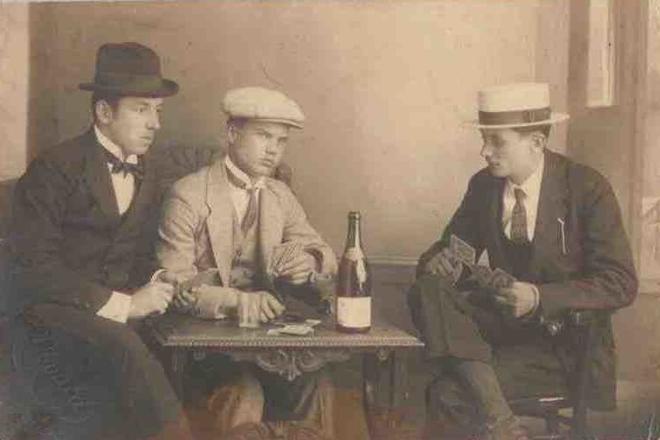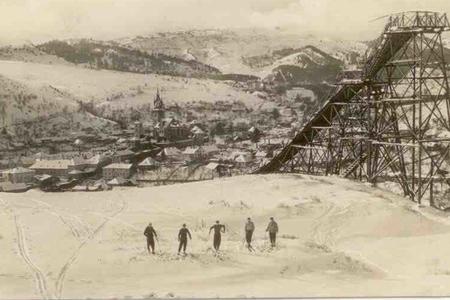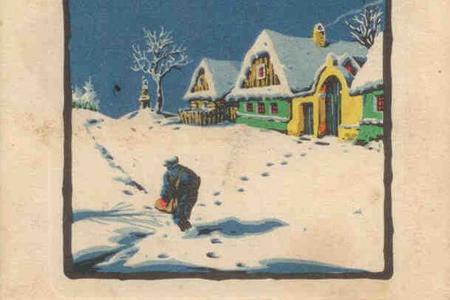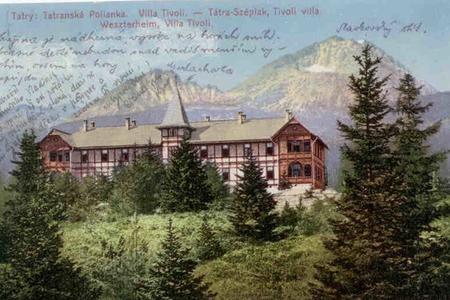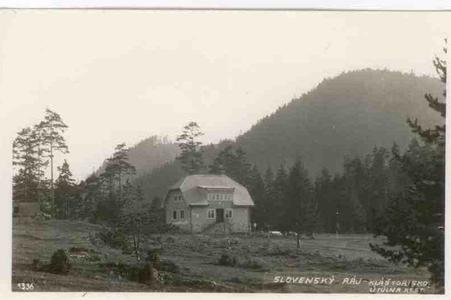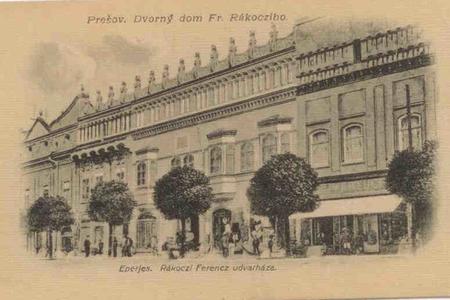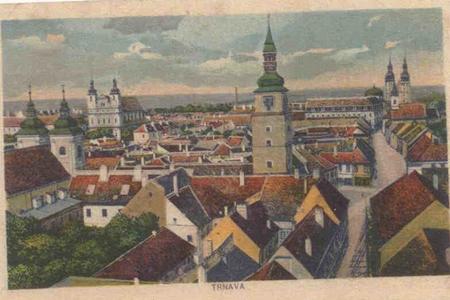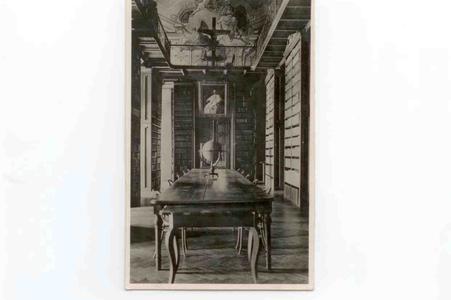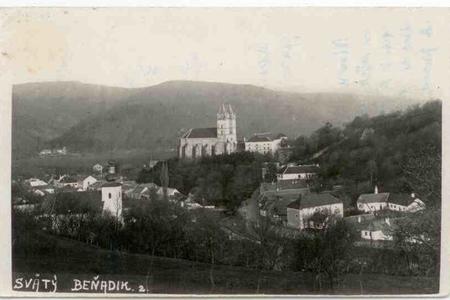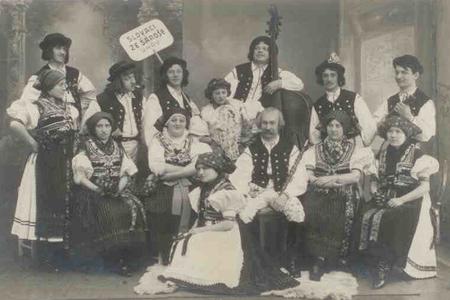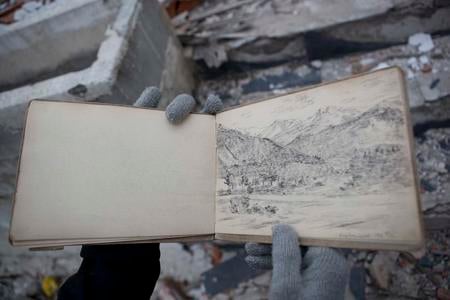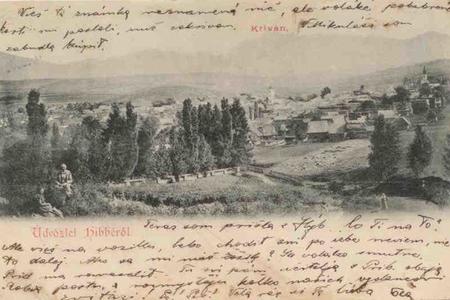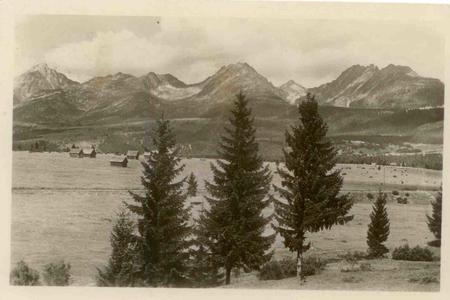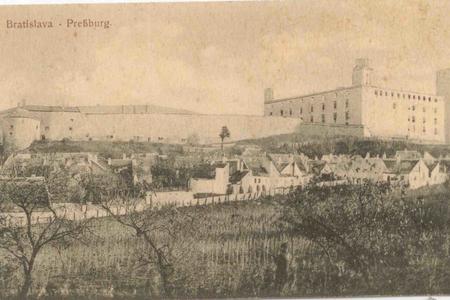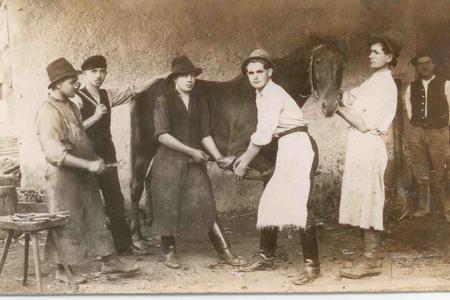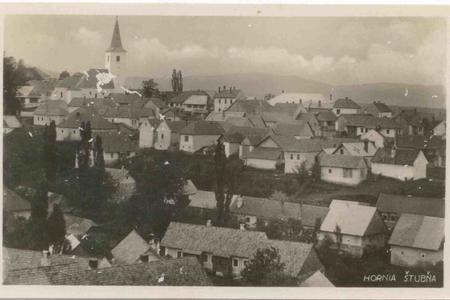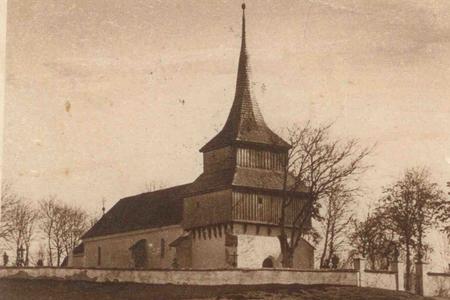History talks, page 6
Learn about Slovak history through stories of interesting people and places.
The mystery of too serious card players
When and where this fascinating photo was made is a mystery - the only lead the image of three card players fascinated by a bottle of wine reveals is its publisher.
Skiers’ Kremnica
Hiking trails in High Tatras could tell tales on how advantageous it was in the past to lie close to main railway lines; thanks to this fact, they thrived and got rich thanks to regular and abundant visits by moneyed clients from Budapest or Vienna.
Three days of Christmas
This Christmas card dates, with all probability, to the 1930s. Although the writing it contains is in Slovak, the architecture of the village buildings shows that the artist who made this painting was probably Czech.
Italy in the High Tatras
The spa village of Tatranská Polianka was known by several names in the past. The predominant name was Weszterheim, or Weszter’s House, after a businessman of that name who bought it in 1881 as part of the plots of the Mariássy family under the peak Slavkovský štít.
Keeping silence in Paradise
Lapis refundii, or the Rock of Refuge, is a well-known notion in Slovak history, connected with the ancient era of Tartar raids.
Renaissance gem of Upper Hungary
The Habsburg imperial court belonged among the mightiest in Europe but at home, its position was not always easy.
The shame of Slovakia
Deep in the Low Tatra mountains, one of the most picturesque spas in Slovakia used to stand.
Johannites in Trnava
History is like a very long story of which nobody remembers the beginning quite clearly. This is especially true in cities where monuments commemorating older events are usually replaced by newer ones.
Castle, monastery and town
Kláštor pod Znievom is a small town lying in central Slovakia, in the historical province of Turiec. Its name recalls the time when “the great history” was written here.
Books of Jasov
Among the components of a medieval monastery was normally a library with scriptorium.
Shock in the monastery
The Benedictine monastery in Hronský Beňadik lies very close to Slovenská Brána, a sort of canyon through which the Hron river leaves the Žiarska Dolina valley and flows further to the Danubian lowland.
Musical message from Šariš
In this photo from 1909, a band from the region of Šariš is posing. According to the plate one of the musicians is holding, it is clear that the picture was taken somewhere in Bohemia.
Artists try to revive 100-year-old Tatra sketches
A Great-Hungarian army officer Gyula Hembach sketched the views from his hotel room in Tatranská Lomnica in the High Tatras, and the surrounding vistas.
A sentence for forgery?
In this very old postcard from 1902, the vista of the Upper Liptov-region town of Hybe can be seen. Both signs that are visible – Kriván and Hibbe – reveal something about history.
Herdsmen’s country
Only a few dozen years ago Liptov looked as it does on this postcard from the 1930s. Under the mountainside spread endless pastures dotted with wooden hay sheds.
A clown under the castle
In the past, the most frequently photographed object in Bratislava was the castle. Its pictures taken from the Petržalka side of the Danube river are well-known but those made from the other side, from the Small Carpathians, are slightly more rare.
A greeting of stylised smiths
THE FIRST smiths appeared in Slovakia sometime in the 12th or 13th century, and some of the last could be found around the mid-20th century.
Lumberjacks from Hauerland
Horná Štubňa belongs among the villages of the German-language belt in Slovakia, close to the famous ancient mining town of Kremnica. This area is composed of 24 villages and known as Hauerland.
The power of the Hussite tradition
ALMOST all wooden churches in Slovakia are located in Orava or in the east of the country. There is one exception, though – the gothic church of St. Nicholas in Bánovce nad Bebravou, which is partially built from wood.
Mikulčice-Kopčany region strives for UNESCO inscription
The cross-border cooperation between Slovakia and the Czech Republic concerning the unique historical region Mikulčice-Kopčany should result in a unique archeo-park and also in an inscription on UNESCO cultural heritage site.
- Making a fortune off pilgrims
- 3 free things to do in Bratislava in the next seven days
- No laughing matter: Slovakia’s top comedians kicked out of state-run venue
- Bože môj: In search of my Rusyn self
- Top 10 events in Bratislava for foreigners
- What makes my roots so alive?
- News digest: Parliament chaos gives Fico a Brussels headache
- News digest: President shuts down referendum push on Russia sanctions Video
- Top 10 events in Bratislava for foreigners
- Bože môj: In search of my Rusyn self
- Making a fortune off pilgrims
- The hidden costs of Slovakia’s complicated tax system
- News digest: President shuts down referendum push on Russia sanctions Video
- 3 free things to do in Bratislava in the next seven days
- Is Slovakia the next Hungary? MEPs raise alarm over democratic backsliding
- How to spend 48 hours in Bratislava
- Bože môj: In search of my Rusyn self
- The hidden costs of Slovakia’s complicated tax system
- Top 10 events in Bratislava for foreigners
- Slovakia ends November 17 public holiday amid fiscal pressures
- Bratislava Region simplifies transport zones, raises fares
- Making a fortune off pilgrims
- Slovakia’s secret weapon is living abroad
- Neo-Nazi gang in Bratislava plotted armed attack and called their leader ‘Mr Führer’, court documents reveal
- Irish outlet hails Slovak spa town as top European holiday spot
- After years of straddling two worlds, this American is now reconnecting with his Slovak roots
- Man appeals for help finding strangers who saved his life
- Bože môj: In search of my Rusyn self
- Slovak physicist: I do not employ doctoral students; I make them go abroad. I expect them to push us forward
- Slovakia’s secret weapon is living abroad
- The hidden costs of Slovakia’s complicated tax system
- Last Week: Central bank governor found guilty, but Fico accuses the judge
- News digest: Parliament chaos gives Fico a Brussels headache
- No laughing matter: Slovakia’s top comedians kicked out of state-run venue
- General prosecutor quietly rebuilds special office once set for dismantling
- Slovak court curbs government effort to oust judge
- Slovaks to celebrate Tax Freedom Day 25 days later than Czechs this year
- Making a fortune off pilgrims
- EU red tape is choking innovation – and Slovakia could be the next casualty
- 3 free things to do in Bratislava in the next seven days More articles ›

